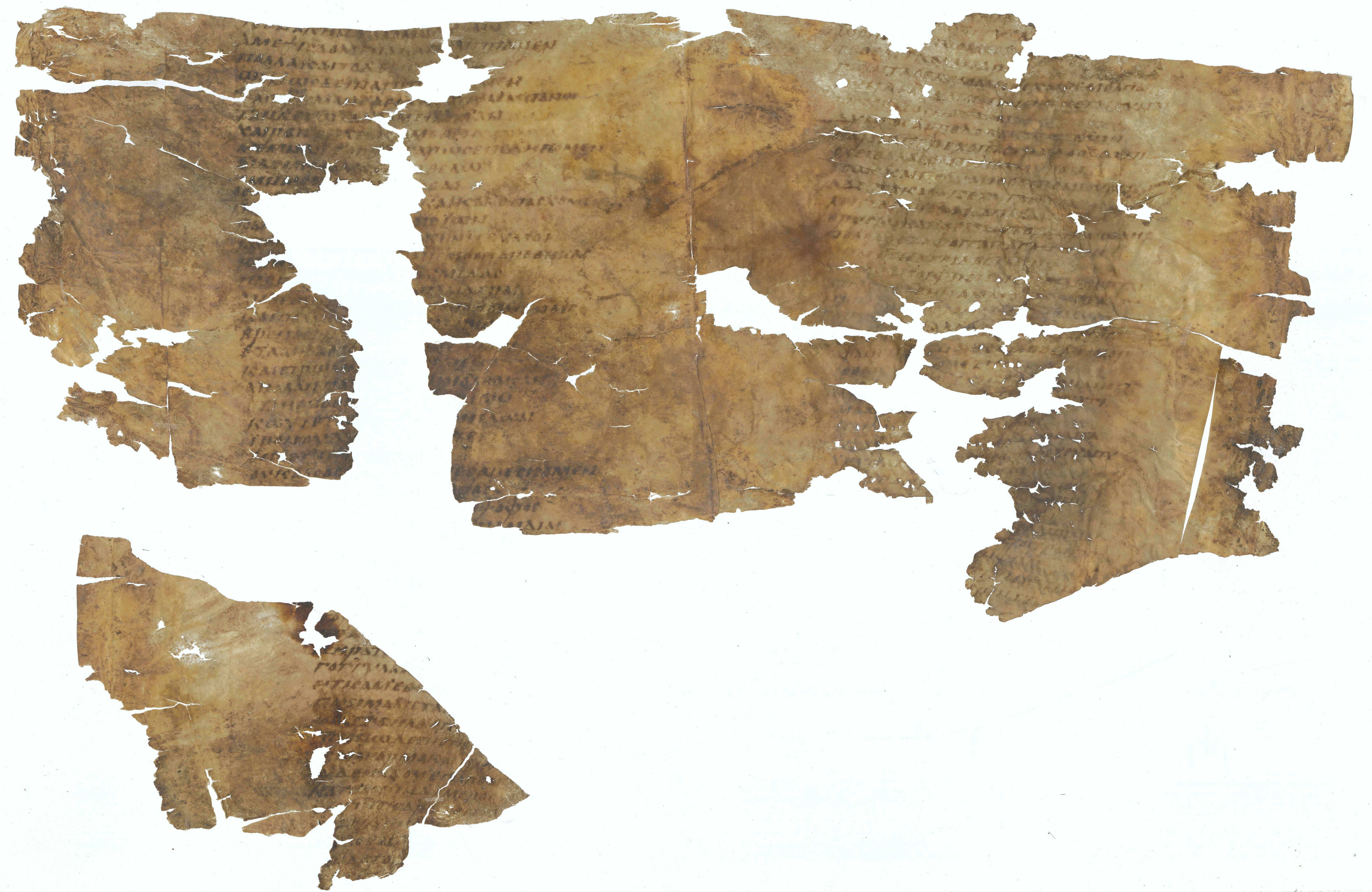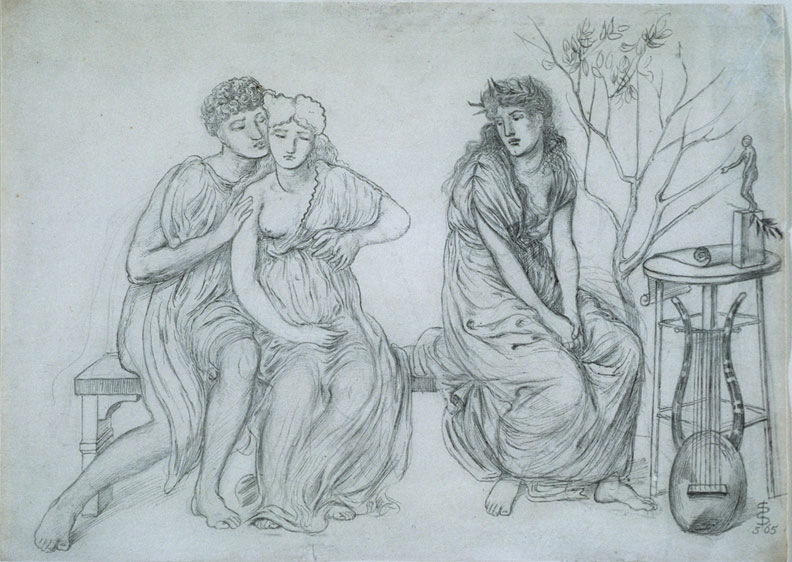Sappho 94 on:
[Wikipedia]
[Google]
[Amazon]
 Sappho 94, sometimes known as Sappho's Confession, is a fragment of a poem by the archaic Greek poet
Sappho 94, sometimes known as Sappho's Confession, is a fragment of a poem by the archaic Greek poet
 The poem is composed in stanzas of three lines, the first two
The poem is composed in stanzas of three lines, the first two
 Sappho 94, sometimes known as Sappho's Confession, is a fragment of a poem by the archaic Greek poet
Sappho 94, sometimes known as Sappho's Confession, is a fragment of a poem by the archaic Greek poet Sappho
Sappho (; el, Σαπφώ ''Sapphō'' ; Aeolic Greek ''Psápphō''; c. 630 – c. 570 BC) was an Archaic Greek poet from Eresos or Mytilene on the island of Lesbos. Sappho is known for her Greek lyric, lyric poetry, written to be sung while ...
. The poem is written as a conversation between Sappho and a woman who is leaving her, perhaps in order to marry, and describes a series of memories of their time together. It survives on a sixth-century AD scrap of parchment. Scholarship on the poem has focused on whether the initial surviving lines of the poem are spoken by Sappho or the departing woman, and on the interpretation of the eighth stanza, possibly the only mention of homosexual activities in the surviving Sapphic corpus.
Preservation
The poem was one of a group (Sappho 92–97) preserved on a sixth-century piece of parchment discovered in Egypt. This parchment, P. Berol. 9722, was probably originally part of a book. The parchment is 12 cm high (though the page was originally about twice this height) and 43.5 cm wide, and consists of a double-page spread with a third page sewn to the right hand side. The page on which Sappho 94 is preserved is 16 cm wide. It is part of the collection of theEgyptian Museum of Berlin
The Egyptian Museum of Berlin (german: Ägyptisches Museum und Papyrussammlung) is home to one of the world's most important collections of ancient Egyptian artefacts, including the iconic Nefertiti Bust. Since 1855, the collection is a part of t ...
, which acquired it in 1896, a gift of a Dr Reinhardt, then the German vice-consul
A consul is an official representative of the government of one state in the territory of another, normally acting to assist and protect the citizens of the consul's own country, as well as to facilitate trade and friendship between the people ...
in Bushehr
Bushehr, Booshehr or Bushire ( fa, بوشهر ; also romanised as ''Būshehr'', ''Bouchehr'', ''Buschir'' and ''Busehr''), also known as Bandar Bushehr ( fa, ; also romanised as ''Bandar Būshehr'' and ''Bandar-e Būshehr''), previously Antioc ...
. It was first published by Wilhelm Schubart
Friedrich Wilhelm Ludwig Schubart (21 October 1873 – 9 August 1960) was a German ancient historian. He was leading authority in the field of papyrology.
Shubart was born on 21 October 1873 in Liegnitz, then part of the German Empire. He studied ...
in 1902.
Parts of ten stanzas
In poetry, a stanza (; from Italian ''stanza'' , "room") is a group of lines within a poem, usually set off from others by a blank line or indentation. Stanzas can have regular rhyme and metrical schemes, but they are not required to have eithe ...
of the poem are preserved, though only twelve lines are complete. Only two lines of the first stanza of the poem are preserved, showing that at least one line – the first of that stanza – is missing. It is unknown whether the poem originally had further stanzas either before or after the surviving portion.
Poem
Content
 The poem is composed in stanzas of three lines, the first two
The poem is composed in stanzas of three lines, the first two glyconic
Glyconic (from Glycon, a Greek lyric poet) is a form of meter in classical Greek and Latin poetry. The glyconic line is the most basic form of Aeolic verse, and it is often combined with others.
The basic shape (often abbreviated as gl) is as fol ...
and the third glyconic with dactylic expansion. That is, the first two lines of each stanza are of the form "× × ¯ ˘ ˘ ¯ ˘ ¯", and the third is in the form "× × ¯ ˘ ˘ ¯ ˘ ˘ ¯ ˘ ¯", where × is an anceps
In languages with quantitative poetic metres, such as Ancient Greek, Latin, Arabic, Sanskrit, and classical Persian, an anceps (plural ''ancipitia'' or ''(syllabae) ancipites'') is a position in a metrical pattern which can be filled by either a lo ...
(a syllable that can be long or short), ˘ is a short syllable, and ¯ is a long syllable. It was part of Book V of the Alexandrian edition of Sappho's poetry, which may have contained poems in a number of different metres based on glyconics.
The poem begins ''in media res
A narrative work beginning ''in medias res'' (, "into the middle of things") opens in the midst of the plot (cf. ''ab ovo'', ''ab initio''). Often, exposition is bypassed and filled in gradually, through dialogue, flashbacks or description of pa ...
'', with at least one prior line missing. The first surviving line of the fragment has either Sappho or the woman leaving her saying that they wish to be dead; as it stands, it is not possible to determine with certainty to which speaker the line should be attributed. Most scholars attribute the initial line of the poem to Sappho. On the other hand, Wilhelm Schubart
Friedrich Wilhelm Ludwig Schubart (21 October 1873 – 9 August 1960) was a German ancient historian. He was leading authority in the field of papyrology.
Shubart was born on 21 October 1873 in Liegnitz, then part of the German Empire. He studied ...
, the first to edit the poem, initially thought that it was spoken by the departing woman; this is a position that has been taken up more recently by scholars such as Stephanie Larson.
The first two surviving stanzas of the poem establish the scene. Sappho describes the woman leaving her "weeping" and saying that she leaves unwillingly. In the third stanza, Sappho replies, telling the departing woman that she should "Go happily and remember me". The woman leaving Sappho is perhaps departing to marry, and the poem might be part of a group of works by Sappho associated with women's preparations for marriage.
The remaining seven stanzas of the poem consist of Sappho recalling the happy times that she has shared with the woman – Dr. Ellen Greene describes the poem from line 12 as painting a picture of "blissful satisfaction". Many commentators have interpreted this as Sappho attempting to console her departing companion; John Rauk, however, argues that the work was not intended as a poem of consolation but as a lament for Sappho's loss of her lover.
Interpretation
The poem is typical of Sappho's work, with its subject and form both characteristically Sapphic. It deals with separation from someone the poet cares about – what Benjamin Acosta-Hughes describes as Sappho's "poetry of separation and longing". This theme is also treated in several other significant fragments of Sappho, including theOde to Aphrodite
The Ode to Aphrodite (or Sappho fragment 1) is a lyric poem by the archaic Greek poet Sappho, who wrote in the late seventh and early sixth centuries BCE, in which the speaker calls on the help of Aphrodite in the pursuit of a beloved. The poem ...
, fr. 16, and fr. 31. The form of the poem – structured as a conversation Sappho has had – has parallels in the Ode to Aphrodite, and probably fragments including Sappho 95
Sappho (; el, Σαπφώ ''Sapphō'' ; Aeolic Greek ''Psápphō''; c. 630 – c. 570 BC) was an Archaic Greek poet from Eresos or Mytilene on the island of Lesbos. Sappho is known for her Greek lyric, lyric poetry, written to be sung while ...
.
Sappho's linking of love and death in this poem is a common trope of lyric poetry
Modern lyric poetry is a formal type of poetry which expresses personal emotions or feelings, typically spoken in the first person.
It is not equivalent to song lyrics, though song lyrics are often in the lyric mode, and it is also ''not'' equi ...
. Along with fragment 94, Sappho herself uses the conceit in fragment 31 ("to myself I seem needing but little to die") and fragment 95 ("a longing to die holds me"). Stephanie Larson compares this longing for death at the absence of a beloved in Sappho to Penelope
Penelope ( ; Ancient Greek: Πηνελόπεια, ''Pēnelópeia'', or el, Πηνελόπη, ''Pēnelópē'') is a character in Homer's ''Odyssey.'' She was the queen of Ithaca and was the daughter of Spartan king Icarius and naiad Periboea. Pe ...
's longing for death in the ''Odyssey
The ''Odyssey'' (; grc, Ὀδύσσεια, Odýsseia, ) is one of two major Ancient Greek literature, ancient Greek Epic poetry, epic poems attributed to Homer. It is one of the oldest extant works of literature still widely read by moder ...
'' – though where Penelope has already been separated from her husband for 20 years, Sappho and her beloved are only just about to separate.
The eighth stanza of the poem has been subject of much scholarly debate – along with the identity of the speaker in the first paragraph, Margaret Williamson describes it as one of the two key points of uncertainty in the text. This reads:
The lines may be the only clear reference to homosexual activity
Homosexuality is romantic attraction, sexual attraction, or sexual behavior between members of the same sex or gender. As a sexual orientation, homosexuality is "an enduring pattern of emotional, romantic, and/or sexual attractions" to peop ...
in the preserved fragments of Sappho. Not all commentators agree with this, however; Larson notes that scholars "have made every attempt" to "explain away the overt sexuality" of the lines. One suggestion, originating with Ulrich von Wilamowitz-Moellendorff
Enno Friedrich Wichard Ulrich von Wilamowitz-Moellendorff (22 December 1848 – 25 September 1931) was a German classical philologist. Wilamowitz, as he is known in scholarly circles, was a renowned authority on Ancient Greece and its literature ...
, is that the poem is referring to satisfying the departing woman's desire for sleep.
Sappho 94 has sympotic overtones, containing references to garlands, flowers, sweet oils, and soft beds, all of which are images associated with the symposium – an ancient Greek drinking party, which was accompanied by entertainment, including music and dance. Because of this, Ewen Bowie argues that the poem may have been one of those which was commonly performed at ancient symposia. The same images are also found in the world of female ritual, however. André Lardinois observes that they could describe the activities of a chorus
Chorus may refer to:
Music
* Chorus (song) or refrain, line or lines that are repeated in music or in verse
* Chorus effect, the perception of similar sounds from multiple sources as a single, richer sound
* Chorus form, song in which all verse ...
of women culminating in a performance at a holy site ("no holy site... we left uncovered, no grove... dance"Sappho 94.25-7), and Margaret Williamson interprets the final section of the poem as discussing the same kind of religious practice as that in Sappho 2
Sappho 2 is a fragment of a poem by the archaic Greek lyric poet Sappho. In antiquity it was part of Book I of the Alexandrian edition of Sappho's poetry. Sixteen lines of the poem survive, preserved on a potsherd discovered in Egypt and firs ...
.
Notes
References
Works cited
* * * * * * * * * * * * * * * * * {{Sappho Ancient Greek poems LGBT poetry Works by Sappho